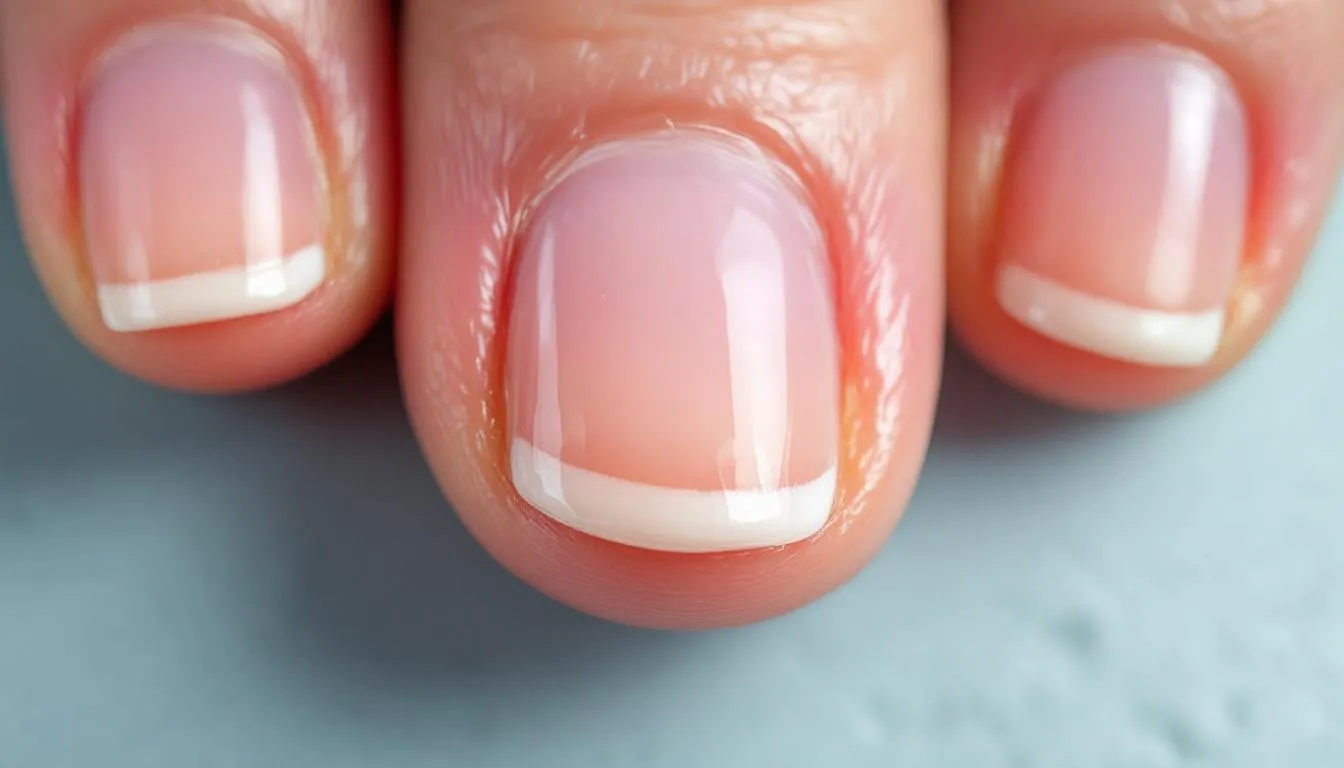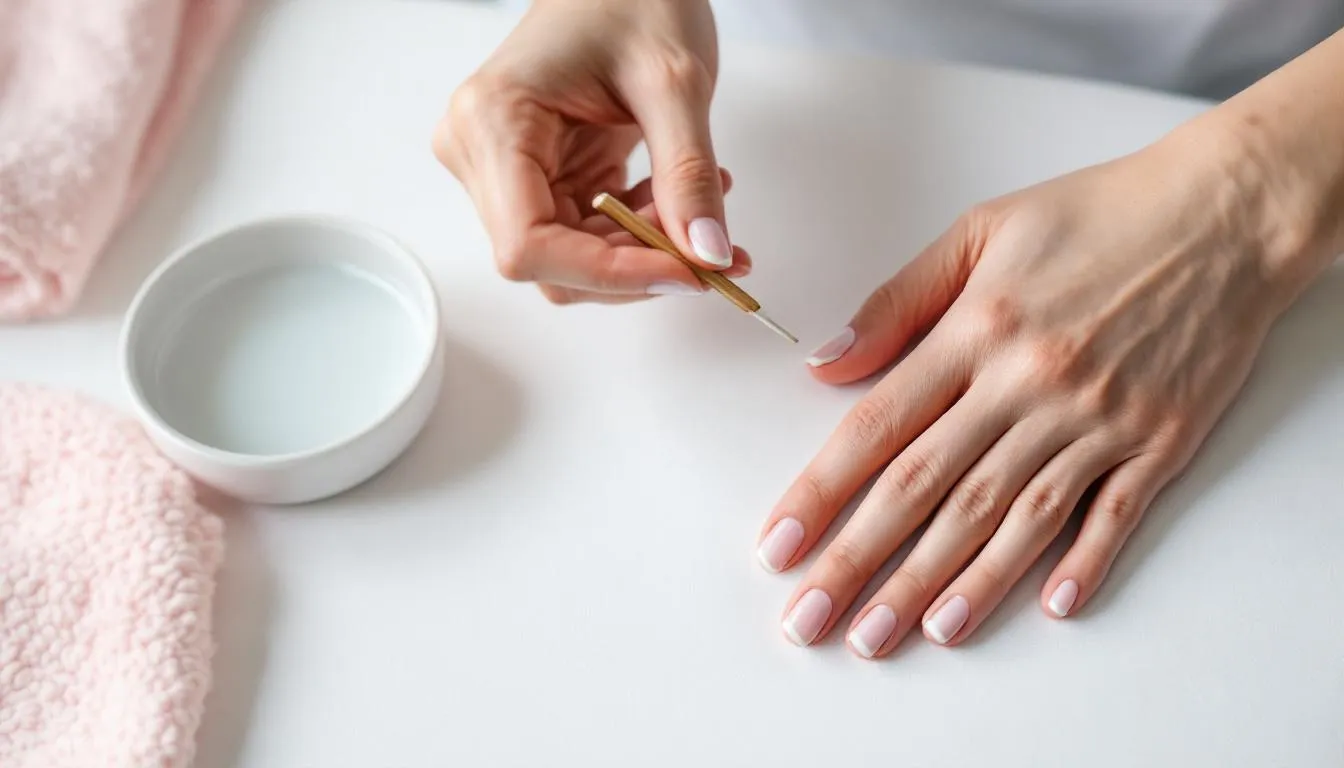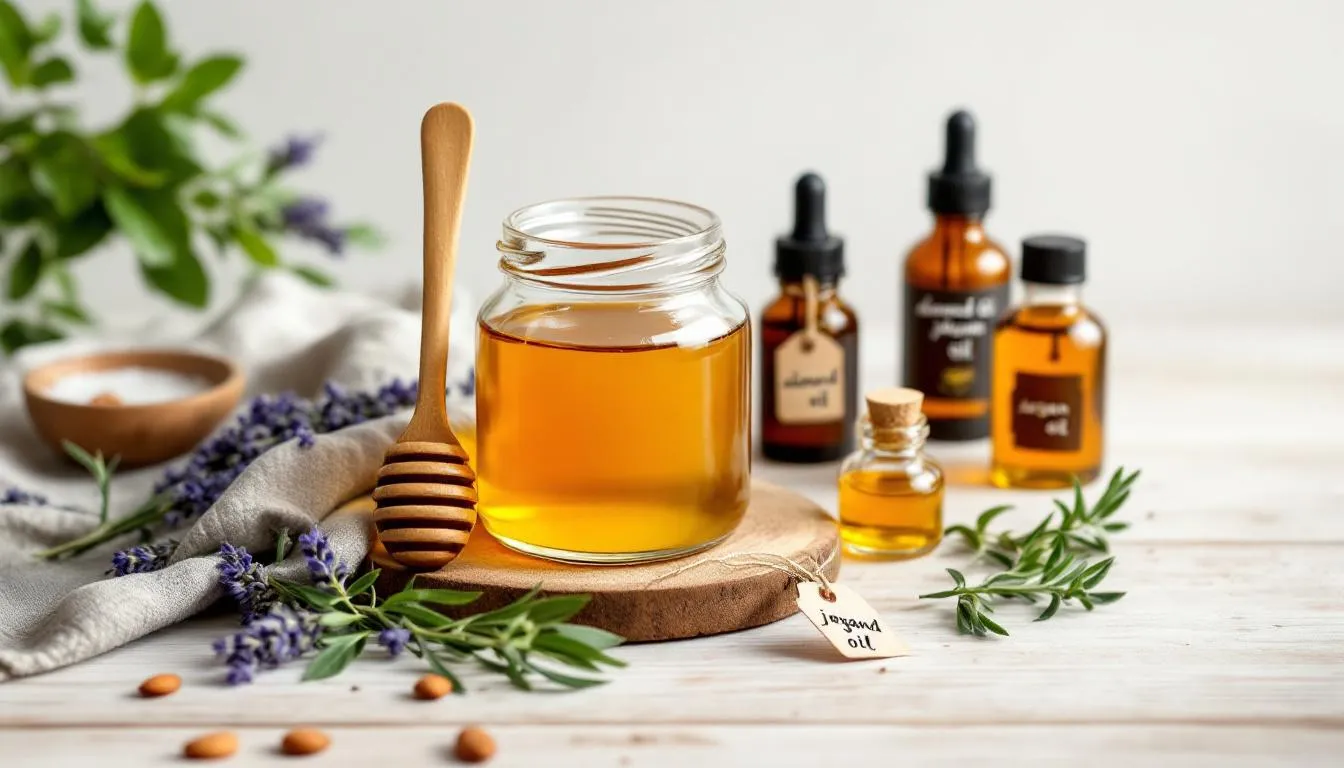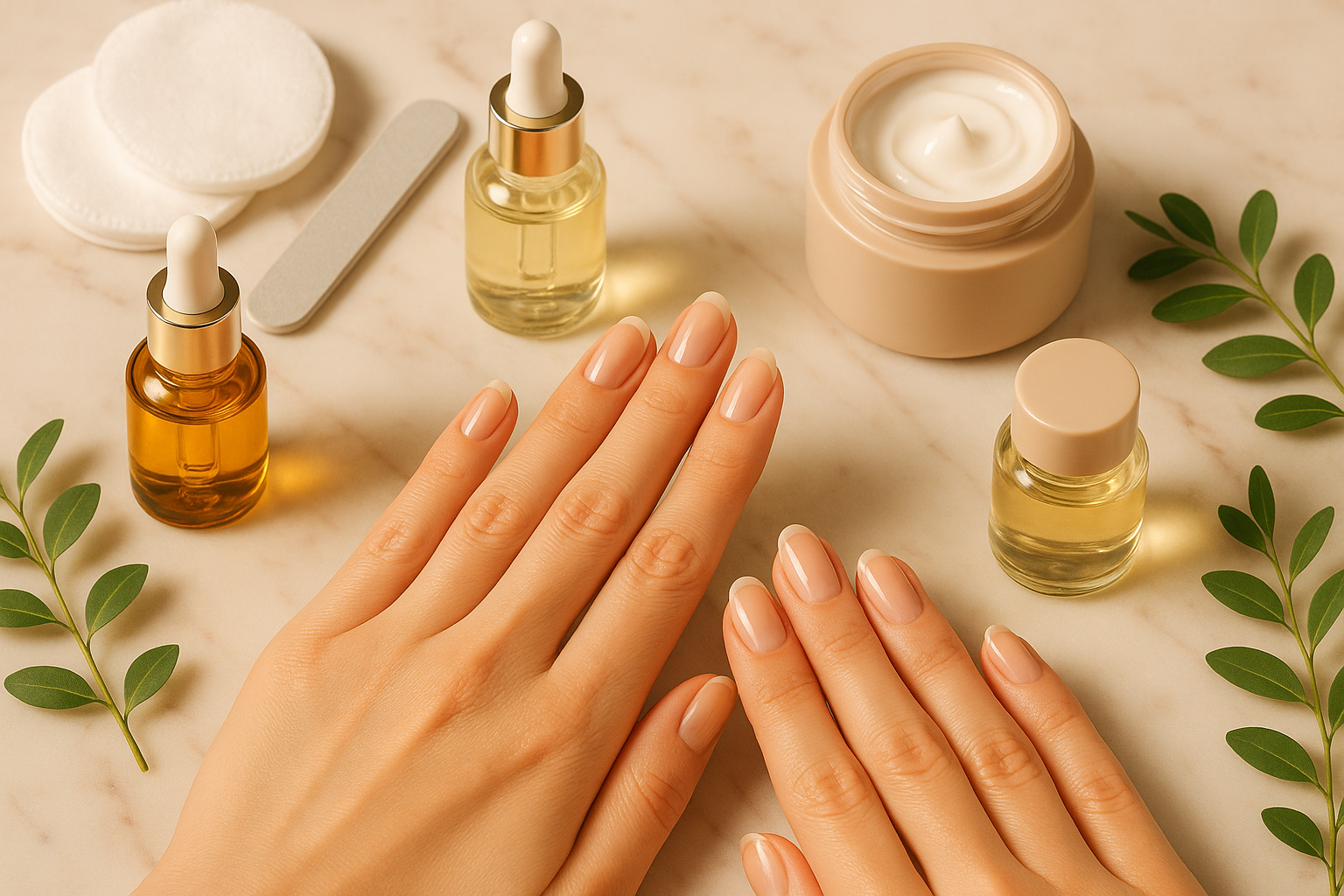Your cuticles serve as tiny guardians protecting your nail health, yet they’re often the most neglected part of your manicure routine. These thin bands of dead skin around your nail bed form a crucial barrier against bacteria, fungi, and environmental damage. Cuticles also protect new nails from bacteria as they grow from the nail root. When this protective seal breaks down, you’re left with dry cuticles, hangnails, and potentially serious infections that can permanently damage your nails if left untreated. But don’t worry — with the right care, you can restore your cuticles to their healthy, happy state. Think of your cuticles as the unsung heroes of your nail health, and giving them some love goes a long way!
Whether you’re dealing with minor dryness from harsh chemicals or severe cracking that’s causing pain and bleeding, effective cuticle repair requires understanding both the underlying causes and the most appropriate treatment approach. This comprehensive guide will walk you through everything from identifying damage levels to implementing professional-grade repair protocols that restore your cuticles to optimal health.
What Are Cuticles and Why Do They Need Repair?
The cuticle, technically called the eponychium, is a thin layer of dead skin that forms a protective seal over your nail matrix - the active growth area where your nails develop. This seemingly insignificant band of tissue plays a vital role in maintaining healthy nails by preventing microbial invasion and protecting the delicate nail bed from environmental damage.

Common Causes of Cuticle Damage
Several factors can compromise your cuticle’s protective function:
Chemical Exposure: Frequent contact with harsh chemicals like sodium hydroxide in cleaning products, acetone in nail polish removers, or citric acid in certain skincare products strips away natural oils and weakens the skin barrier.
Environmental Factors: Cold weather and low humidity environments accelerate moisture loss, leading to dry skin and brittle cuticles. Winter heating systems particularly contribute to this dehydration.
Mechanical Trauma: Aggressive manicures, nail biting, and picking at hangnails create micro-tears that become entry points for bacteria. Using cuticle pushers incorrectly or cutting live cuticle tissue increases infection risk.
Excessive Hand Washing: While maintaining clean hands is important, over-washing with harsh soaps disrupts the skin’s natural pH balance and removes protective oils.
Signs Your Cuticles Need Repair
Recognizing early signs of cuticle damage allows for prompt intervention before serious complications develop. There is a debate in the nail community about whether you should cut your cuticles or not, as improper handling can lead to further damage.
-
Dryness and rough texture around the nail area
-
Visible peeling or flaking of dead skin
-
Development of hang nails or jagged edges
-
Redness, swelling, or tenderness
-
Bleeding from cracks or tears
-
White or yellow discoloration indicating possible infection
Left untreated, damaged cuticles can lead to paronychia, a painful infection that may require medical intervention and can result in permanent nail deformity.
Identifying Cuticle Damage and When to Seek Professional Help
Proper assessment of cuticle condition determines the appropriate repair approach and helps identify when professional medical attention becomes necessary.
Visual Inspection Checklist
Examine your cuticles under good lighting, looking for:
|
Severity Level |
Visual Signs |
Symptoms |
Action Required |
|---|---|---|---|
|
Mild |
Slight dryness, minor peeling |
Occasional tightness |
Home treatment |
|
Moderate |
Visible cracks, small hangnails |
Discomfort, mild swelling |
Intensive home care |
|
Severe |
Deep fissures, bleeding |
Pain, significant swelling |
Consider professional help |
|
Infected |
Pus, green/yellow discharge |
Throbbing pain, fever |
Immediate medical attention |
Warning Signs Requiring Medical Attention
Seek professional help within 24-48 hours if you notice:
-
Green or black discoloration suggesting pseudomonal infection
-
Persistent yellow staining indicating possible fungal involvement
-
Collection of pus or foul odor from the cuticle area
-
Red streaks extending from the infected area
-
Severe pain that interferes with daily activities
-
Symptoms persisting beyond two weeks despite proper home treatment
Individuals with diabetes or compromised immune systems should consult healthcare providers early, as they face higher risks for serious complications from cuticle infections.
Essential Products for Cuticle Repair
Effective cuticle repair requires targeted products that restore moisture, reduce inflammation, and protect against further damage. Understanding key ingredients helps you select the most appropriate treatments for your specific condition.

Cuticle Repair Creams and Treatments
Moisturizing Ingredients: Look for products containing shea butter, which provides deep hydration and anti-inflammatory benefits. Beeswax is another natural ingredient known for its ability to hydrate, soothe, and protect the skin. Glycerin acts as a humectant, drawing moisture from the environment, while ceramides help restore the skin barrier function.
Healing Enhancers: Vitamin E (tocopheryl acetate) supports wound healing and provides antioxidant protection. Retinyl palmitate promotes cell turnover and skin regeneration.
Barrier Protection: Products with cetyl alcohol and glyceryl stearate create a protective film that prevents moisture loss while allowing skin to breathe.
Therapeutic Cuticle Oils
Cuticle oil applications provide intensive nourishment and flexibility to damaged tissue. Applying cuticle oil regularly can help moisturize and prevent dryness and cracking.
Jojoba Oil: Closely mimics natural skin sebum, absorbs quickly without leaving greasy residue Argan Oil: Rich in essential fatty acids and vitamin E, promotes elasticity Sweet Almond Oil: Gentle seed oil that moisturizes without irritation Tea Tree Oil: Provides antimicrobial properties but should be diluted to prevent sensitivity
Product Recommendations and Pricing
Quality cuticle repair products typically range from $8-$25:
-
Burt’s Bees Lemon Butter Cuticle Cream ($8-10): Contains shea butter and vitamin E
-
Sally Hansen Vitamin E Nail & Cuticle Oil ($8-10): Lightweight formula that absorbs quickly
-
CND SolarOil Nail & Cuticle Care ($14-18): Professional-grade treatment with jojoba and vitamin E
-
OPI ProSpa Nail & Cuticle Oil ($18-25): Premium formula with multiple beneficial oils
For severe damage, healing ointments containing lanolin, beeswax, and petroleum jelly provide intensive barrier repair, typically priced $8-15.
Step-by-Step Cuticle Repair Treatment Protocol
Successful cuticle repair follows a structured approach that varies in intensity based on damage severity and healing progress.
Daily Morning Routine
Step 1: Gentle Cleansing
-
Rinse hands with warm water (not hot, which can further dry skin)
-
Use a mild, fragrance-free soap to keep nails clean
-
Pat dry with a soft towel, leaving hands slightly damp
Step 2: Product Application
-
Apply cuticle oil while nails are still damp to enhance absorption. Cuticle oil should be used multiple times a day to effectively hydrate cuticles.
-
Use a small amount - excess product doesn’t improve results
-
Gently massage into the cuticle area using circular motions
-
Allow 2-3 minutes for absorption before applying hand cream
Step 3: Protection
-
Wear rubber or nitrile gloves when cleaning or doing wet work
-
Apply additional barrier cream before outdoor activities in cold weather
Evening Intensive Treatment
Deep Moisturizing Protocol: For more information on effective dry skin treatments, see How to Treat Dry Skin: The Best Methods for Restoring Moisture.
-
Soak fingertips in warm water for 5-10 minutes to soften tissue
-
Gently exfoliate with a soft nail brush to remove dead skin
-
Apply cuticle cream generously to the entire cuticle area
-
Massage gently to improve circulation and product penetration
-
For severe damage, apply a thick healing ointment and wear cotton gloves overnight
Weekly Deep Repair Sessions
Incorporate intensive treatments once weekly:
-
Cuticle Masks: Apply thick layer of repair cream, cover with plastic wrap for 15-20 minutes
-
Oil Treatments: Warm cuticle oil slightly, apply liberally, and massage for 5 minutes
-
Professional-Grade Products: Use higher-concentration treatments with active ingredients

Emergency Repair for Severely Damaged Cuticles
When dealing with bleeding, torn, or severely cracked cuticles:
Immediate First Aid:
-
Clean the area with saline solution or mild antiseptic
-
Apply direct pressure with a clean cloth to control bleeding
-
Once bleeding stops, apply a thin layer of antibiotic ointment
-
Cover with a sterile adhesive bandage
-
Monitor for signs of infection over the next 24-48 hours
Pain Management: Over-the-counter anti-inflammatory medications can reduce swelling and discomfort. Topical anesthetics provide temporary relief but should be used sparingly.
Timeline Expectations
-
Mild Damage: Noticeable improvement within 1 week, full repair in 2-4 weeks
-
Moderate Damage: Initial healing within 2 weeks, complete restoration in 4-6 weeks
-
Severe Damage: May require 6-8 weeks or longer, particularly if infection was present
Consistency is crucial - irregular treatment significantly extends healing time and may lead to setbacks.
Prevention Strategies to Avoid Future Cuticle Damage
Preventing cuticle damage proves far more effective than treating existing problems. Implementing comprehensive protection strategies maintains cuticle health year-round.
Daily Protective Habits
Chemical Protection:
-
Wear appropriate gloves when using cleaning products containing potassium hydroxide or other harsh chemicals
-
Choose alcohol-free hand sanitizers when possible, or follow with moisturizer immediately
-
Avoid gel polish removers with high acetone concentrations
-
Use cuticle-friendly nail products free from formaldehyde and toluene
Mechanical Protection:
-
Never cut living cuticle tissue - only trim loose, dead skin. The cuticle is actually the dead tissue that grows onto your nail and can be safely removed.
-
Use sterilized cuticle pushers and gently push cuticles when nails are soft
-
Avoid aggressive scrubbing with nail brushes
-
Break nail biting and cuticle picking habits through stress management and barrier methods
Environmental Adaptations
Climate Considerations:
-
Increase moisturizing frequency during winter months
-
Apply extra barrier protection before outdoor activities in harsh weather
-
Protect hands from sun exposure, which can dry and damage cuticles
Professional Manicure Guidelines:
-
Ensure all tools are properly sterilized between clients
-
Request gentle cuticle care techniques
-
Verify salon hygiene standards meet professional requirements
-
Communicate any sensitivities or previous reactions to products
Seasonal Cuticle Care Adjustments
Winter Protocol: Double moisturizing frequency, use heavier creams, wear protective gloves outdoors Summer Protocol: Focus on sun protection, increase hydration after swimming, use lighter oils that absorb quickly
Home Remedies and Natural Cuticle Repair Solutions
Natural ingredients offer effective, budget-friendly alternatives to commercial products, particularly for mild to moderate cuticle damage.

DIY Cuticle Repair Treatments
-
Mix equal parts raw honey and coconut oil
-
Apply to cuticles, leave for 15-20 minutes
-
Honey provides antibacterial properties while coconut oil deeply moisturizes
-
Cost: Under $3 per treatment
-
Blend oatmeal into fine powder
-
Mix with honey or olive oil to form paste
-
Gently rub onto cuticles to remove dead skin
-
Provides mild exfoliation without irritation
Chamomile Tea Soak:
-
Brew strong chamomile tea, allow to cool
-
Soak fingertips for 10 minutes
-
Chamomile’s anti-inflammatory compounds soothe irritated tissue
-
Contains disodium edta naturally, which helps preserve skin barrier
Kitchen Ingredient Solutions
Avocado Treatment: Mash ripe avocado, apply for 20 minutes - rich in beneficial fats and vitamins Olive Oil Massage: Warm slightly, massage for 5 minutes - provides deep penetration and flexibility Lemon Juice Brightening: Mix with olive oil (never use alone) - helps remove staining and softens tissue
Safety Considerations for Natural Remedies
Always perform patch testing before full application:
-
Apply small amount to inner wrist
-
Wait 24 hours for any reaction
-
Discontinue use if redness, itching, or irritation develops
Essential oils must be diluted properly - tea tree oil should never exceed 5% concentration for cuticle use.
Professional Treatment Options for Stubborn Cuticle Issues
When home treatments prove insufficient, professional interventions offer advanced solutions for chronic or severe cuticle problems.
Medical-Grade Treatments
Dermatology Clinic Options:
-
Prescription corticosteroid creams for inflammatory conditions ($25-50)
-
Topical antibiotics for persistent bacterial infections
-
Antifungal treatments for mycotic involvement
-
Custom compounded formulations for specific conditions
Advanced Therapeutic Approaches:
-
Intralesional steroid injections for severe inflammation
-
Professional debridement of damaged tissue
-
Specialized wound care protocols for chronic non-healing areas
Professional Salon Services
Intensive Repair Treatments ($30-80):
-
Paraffin therapy for deep moisturization
-
Professional-grade cuticle masks with concentrated active ingredients
-
Multi-step protocols combining exfoliation, treatment, and protection
-
LED light therapy for enhanced healing (emerging treatment)
Maintenance Programs:
-
Monthly professional cuticle care to prevent damage recurrence
-
Seasonal intensive treatments
-
Product recommendation and technique education
Insurance and Cost Considerations
Medical treatments for cuticle conditions may qualify for insurance coverage when:
-
Diagnosed as medical condition (paronychia, dermatitis)
-
Documented by healthcare provider
-
Conservative treatments have failed
-
Condition impacts daily function or causes significant pain
Cosmetic treatments typically require out-of-pocket payment, with package deals often providing better value than individual sessions.
Monitoring Progress and Long-term Cuticle Health Maintenance
Successful cuticle repair requires systematic tracking and long-term maintenance strategies to prevent recurrence.
Progress Tracking Methods
Weekly Documentation:
-
Take consistent photos under similar lighting conditions
-
Rate symptoms on 0-10 scale (pain, dryness, inflammation)
-
Note which treatments provide the most benefit
-
Track environmental factors that worsen or improve condition
Healing Milestones:
-
Week 1-2: Reduced pain and inflammation
-
Week 3-4: Visible improvement in skin texture
-
Week 5-8: Complete barrier restoration and flexibility return
Long-term Maintenance Protocol
Daily Minimum Care:
-
Morning: Light application of cuticle oil or cream
-
Evening: Slightly heavier moisturizing treatment
-
Consistent use of protective measures during daily activities
Weekly Intensive Care:
-
One deep moisturizing session
-
Gentle exfoliation if needed
-
Assessment for early signs of damage recurrence
Monthly Professional Assessment:
-
For those with history of chronic problems
-
Adjustment of home care routine as needed
-
Early intervention for developing issues
Building Sustainable Habits
Habit Stacking: Link cuticle care to existing routines like tooth brushing or skincare application Environmental Cues: Keep cuticle products visible near hand washing areas Gradual Implementation: Start with once-daily application, gradually increase as habit forms
Success Indicators:
-
Smooth, flexible cuticles without cracks or hangnails
-
Absence of pain or tenderness
-
Healthy nail growth from protected matrix
-
No recurrence of infection signs
The key to permanent cuticle health improvement lies in consistent daily care rather than intensive periodic treatments. Small, regular applications of appropriate products protect your investment in healing and maintain the barrier function that keeps your nails healthy.
Effective cuticle repair combines scientific understanding of skin barrier function with practical application of proven treatments. Whether you choose professional-grade products, natural remedies, or medical interventions, success depends on matching treatment intensity to damage severity and maintaining consistent care protocols. Your cuticles may be small, but their role in nail health and infection prevention makes them worthy of the attention and care outlined in this comprehensive guide.





